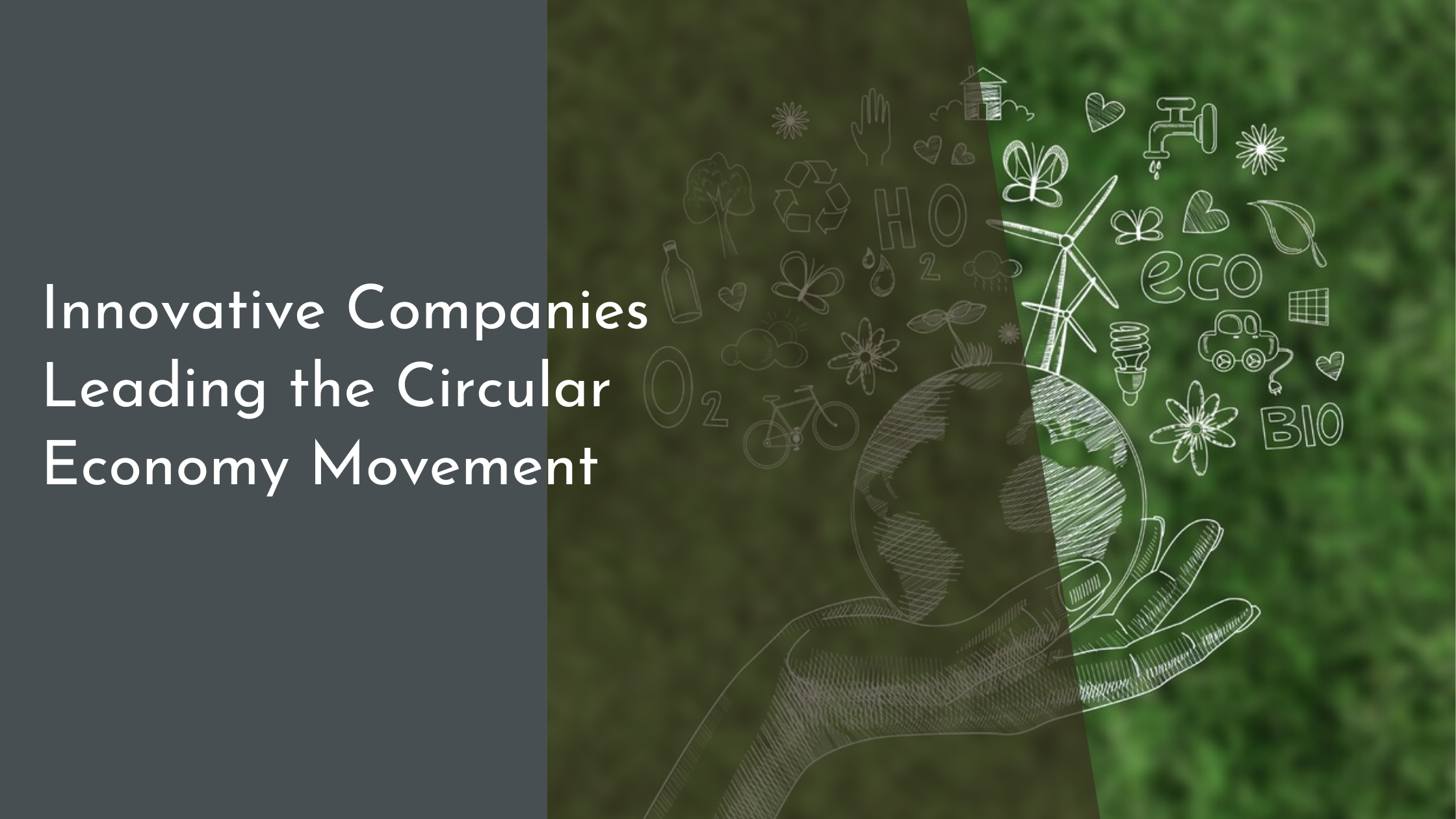Innovative Companies Leading the Circular Economy Movement
In the quest for a sustainable future, the circular economy model has emerged as a promising solution to address the pressing challenges of resource depletion and waste management. Unlike the traditional linear model of “take, make, dispose,” the circular economy emphasizes the continuous use of resources by creating closed-loop systems that minimize waste and make the most of available materials. Several innovative companies around the world are spearheading this movement, redefining industry practices, and implementing groundbreaking technologies. In this article, we explore the leading companies, transformative practices, key technologies, and collaborative efforts that are driving the circular economy forward.
Pioneers in Circular Economy Innovations
One remarkable pioneer in the circular economy space is Patagonia, the outdoor clothing company renowned for its commitment to sustainability. Patagonia has embedded circular practices into its business model with its “Worn Wear” program, which encourages customers to repair, share, and recycle their garments. Through the initiative, the company not only extends the life of its products but also educates consumers on the environmental benefits of keeping clothing in use longer. Patagonia’s innovation lies in its dedication to reducing environmental impact while building a loyal community that values sustainability.
Another trailblazer in the circular economy is TerraCycle, a company that has revolutionized waste management by transforming the way consumers and businesses approach recycling. With innovative programs that recycle hard-to-recycle waste, TerraCycle has partnered with major corporations to repurpose materials once destined for landfills. Its Zero Waste Box initiative allows consumers to collect and send non-recyclable waste to TerraCycle for proper processing, thereby closing the loop on product life cycles. By demonstrating that waste can be a valuable resource, TerraCycle is setting new standards in environmental responsibility.
Transformative Practices Redefining Industries
In the fashion industry, companies like H&M are implementing circular practices with their Conscious Collection and garment recycling initiatives. H&M has set ambitious goals to become fully circular by 2030, integrating sustainable materials, like organic cotton and recycled polyester, into their clothing lines. The company’s garment collection program encourages customers to donate old clothes, which are then reused, recycled, or upcycled. These practices help reduce textile waste and set an industry-wide precedent for sustainability.
The automotive industry has also been redefined by circular economy practices, as exemplified by Renault. The French automaker has embraced sustainability by focusing on remanufacturing and recycling components in its factories. Renault’s Circular Economy Factory in France remanufactures car parts, giving them a new life and significantly reducing the energy and raw materials required for production. By promoting the use of remanufactured parts, Renault not only cuts down on waste but also makes automotive maintenance more affordable for consumers.
Key Technologies Driving Sustainability Forward
Blockchain technology is playing a crucial role in enhancing transparency and efficiency in the circular economy. By providing a secure and immutable ledger, blockchain enables companies to trace the entire lifecycle of a product, from raw material sourcing to disposal. This technology ensures authenticity, reduces fraud, and builds consumer trust by allowing them to verify the sustainability of their purchases. For instance, companies like Everledger use blockchain to track the provenance of diamonds, ensuring ethical sourcing and reducing environmental harm.
Advances in 3D printing are also transforming industries by promoting sustainable production practices. This technology allows for on-demand manufacturing, reducing the need for large inventories and minimizing waste. Companies like HP have developed 3D printers that use recycled materials, turning plastic waste into high-quality products. By embracing 3D printing, industries can reduce their carbon footprint and customize products without the environmental costs associated with traditional manufacturing processes.
Collaborative Efforts Fueling Global Impact
Collaborations between businesses, governments, and non-profit organizations are essential in scaling circular economy practices. Programs like the Ellen MacArthur Foundation’s Circular Economy 100 bring together stakeholders from diverse sectors to develop and implement circular economy solutions. By fostering collaboration, these initiatives create a platform for sharing knowledge, resources, and innovations that drive global impact. Such collective efforts amplify the reach and effectiveness of circular practices, making sustainability a shared goal.
Additionally, collaborative partnerships are emerging within industries themselves. For example, Loop, a global circular shopping platform, partners with major consumer goods companies like Procter & Gamble and Unilever to offer products in reusable packaging. Loop’s system allows consumers to purchase everyday items in durable containers that are returned, cleaned, and reused, drastically reducing packaging waste. By joining forces, these companies demonstrate that collaboration is key to advancing the circular economy on a larger scale.
The circular economy movement is gaining momentum, propelled by innovative companies leading the charge in sustainability. By redefining industry practices, embracing transformative technologies, and fostering collaborations, these pioneers are creating a more sustainable future for all. As businesses and consumers alike recognize the value and necessity of circular systems, the potential for global impact grows exponentially. Together, through innovation and cooperation, we can move towards a world where waste is minimized, resources are conserved, and our planet thrives.

